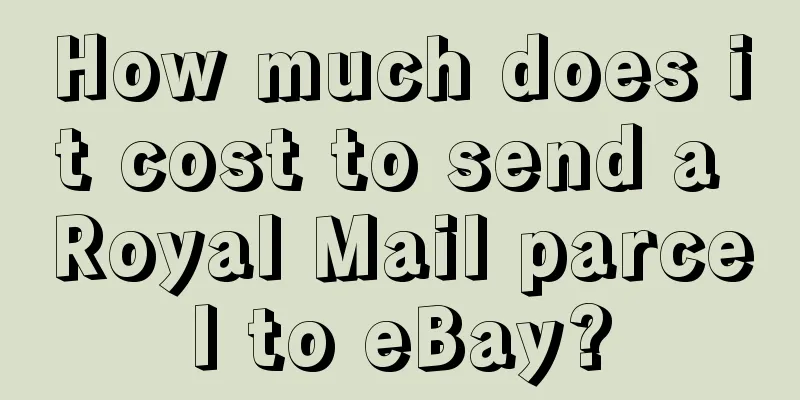TOB User Operations - Activity Operations (2500 words)

"ToB activities play an important role in brand building, acquiring new customers, converting orders, maintaining customer relationships, and providing market insights." (Source: AI Q&A) In fact, I mentioned activity coordination in the previous article "SEM, activity, and content marketing collaborative strategy". I will not repeat it below. If you are interested, please check this article. 1. Pre-activity demand research and basic setup 2. Activity promotion and cooperation 3. Communication and feedback after the event In addition to cooperating with the work, we must not forget the focus of our job. So this time I will not talk about empty words, but continue to share my practical experience. Let's talk about what tob user operations can do in event operations! (This time it is mainly online activities) 1. Online Activities 1. Activity Preparation
2. Event Promotion
3. List processing after the event (key points)
2. Offline Salon 3. Small-scale activities (dry goods information) 1. Confirmation before external publicity 2. The first round of publicity 3. Second round of publicity 4. Customer return visit 1. Online Activities1. Activity PreparationOperation colleagues need to confirm the time, schedule, and complete the plan on schedule. In the article "The Application of PDCA in TOB User Operation", I mentioned the [Daily Operation Log]. Because user operation is more complicated and scattered, it is best to have a log to record daily operation actions. For example, if I know the time of the event, I will immediately mark it in red in the log to remind myself that there will be an event at a certain time. Then, in reverse, I usually start promoting it a week in advance, so that a general promotion plan will come out. Including but not limited to creating activity tags, activity live codes, etc. Then confirm the theme and target customer group, because the focus of subsequent promotion is to promote to this customer group. If the customer group is not limited, promote to all employees normally. My personal suggestion is that tob activities are basically promoted to all employees, such as friends circle and community, because the activities are not as frequent as toc. If you encounter a target customer group, you can use EDM, SMS, private chat and other methods to reach them in a personalized way. Finally, confirm some publicity matters, which the operations colleagues need to confirm in advance, including the form of external publicity, information confirmation, and follow-up Q&A after the live broadcast. The specific considerations are as follows:
2. Event PromotionIn addition to regular promotional cooperation (see "Collaborative Operation Strategy of SEM, Events, and Content Marketing" for details), customer interactions can be designed, such as raffles, real-time interactions within the community, guided questions, etc. What needs to be mentioned here is the post-event promotion, including WeChat Moments, social networks, etc. It is even better if the copywriter has an article reviewing the event, and use the article to promote it again. This action is to let customers who did not participate know about the event, so that they can watch the replay, and also promote the company's activities to all customers, so that they can carry out the activities in a planned manner, deepen their impressions, and facilitate the promotion of other subsequent activities. 3. Post-event list processingThe processing of the event list is critical. The operation colleagues must first confirm the live broadcast format and the registration form format. For example, if the live broadcast is on video accounts, Douyin, etc., the form cannot be collected. The advantage is that the platform is considered a public domain, which may expand the influence and facilitate viewing and forwarding. However, if it is a live broadcast platform that requires registration, it is relatively private domain, because customers must register to participate. The advantage is that it can effectively contact customers and facilitate the judgment of the quality of the event. My personal practice is more about the need to register and view, so I will focus on the list processing. The first step is to sort out the list . The event manager will provide a complete customer list in a timely manner. The operations colleague will first mark the obvious invalid list, such as colleagues, competitors, ecosystems, etc. The reason for quickly sorting out the form is that in my personal practice, I will make a timely return visit to the customer. So after the list is screened, it is the first round of return visit. Returning the customer when they have a strong impression can make the customer feel considerate service and increase the brand impression. I personally think that this return visit is still very necessary. The customer feedback is good and there will be interaction. Then comes the first round of screening to improve the customer portrait, especially the customers who have been reached in the private domain. I have written an article about customer tags before. At this time, you need to accurately tag customers, modify tags, etc. The general registration list will leave the company name, name, and phone number, so based on this, add customer tags, such as city, industry, etc., add mobile phone number/company name/position, etc. I will also add MDR tags myself, such as key customers. For customers who were missed to send follow-up visits before, you can make up for the follow-up visits, and just modify the words slightly. Tips: If you have already been added and have had return visits/interactions, etc., you can mark them in the list as appropriate to facilitate the second round of processing later. Then comes the second round of screening . For example, you can delete some customers whose companies and names are obviously filled in randomly, delete customers who are not target customers or target groups, etc. Customers who have not been added to the WeChat account can choose to add them manually, and note the purpose of their visit, etc. There is a lot of room for operation here. The second round of follow-up visits will be carried out as planned, divided into private customer follow-up visits and telephone follow-up visits. When calling for follow-up visits, individuals will look at the customer situation in the CRM, and will also give priority to follow-up visits based on customer size, position, recent communication records, etc. Of course, you can also have your own rules, and it is best to write a SOP, which is clearer. The last part is data analysis and backup , which is part of the activity review. You can design the content of the follow-up visit, such as activity feedback, system usage, etc., and feedback to relevant colleagues. I don’t need to say much about the importance of data backup. Whether it is to organize corporate resources or to use them later, it is what operators need to do. Tips: In fact, the list can be screened in more than two rounds. The activity list is one of the good choices for target customer return visits, which has been written before in "TOB Customer Private Domain Operation Channel Arrangement and Feedback". 2. Offline salon/conferenceOffline salons are similar to online activities, but offline salons generally do not require attendance, so on-site control is not the responsibility of operations colleagues. The operations colleagues focus on event preparation, publicity invitations, event reminders, and event list compilation. Event reminders are usually given one day in advance or on the day of the event. This is very important. One is to remind customers to participate in the event and provide attentive service. The other is to confirm whether the guests will attend the meeting. If the customer informs that he or she will not attend, it should be promptly synchronized to relevant colleagues and recorded. This is related to the attendance rate. Whether the offline conference is self-organized or sponsored, the focus of operations colleagues is still on publicity and lists, so I will not repeat them here. 3. Small-scale activities (dry goods information)Logically speaking, this should be placed in the content operation section, but from the perspective of user operation, it can be regarded as a small event with a similar process to live broadcast, which requires confirmation before external publicity, the first round of publicity, the second round of publicity and customer return visits. Confirmation before external publicity refers to confirming the form of external information, information application mediation and official release time after all basic operations of activities. External information is generally in paper brochures and electronic versions, and the electronic version must be distinguished between watermarked and non-watermarked versions. If the information is for a specific target group, it is necessary to pay attention to the quality of the customer, such as whether it is a peer or a target customer. The general confirmation method is to fill in the information or show a business card. The first and second rounds of publicity include both internal and external publicity. The reason for the two rounds is that external publicity may involve previews and official releases. Publicity and distribution are similar to online live broadcasts, so I won’t go into details. In addition, if it is a paper brochure, it involves mailing, and the mailing list also needs to be updated and synchronized in a timely manner. The last step is to return the customer’s visit. You can still ask for their opinions and feedback during the return visit, and more than once, three months later, six months later, or even a year later, but you must pay attention to your communication skills. Off topic: Every time I write an article, I find that the operational content is a circle, and every time I write an article, I can involve or mention the content I wrote before. Author: cici notes |
<<: It’s hard to make money from short dramas anymore, but Mi Meng is still making a lot of money?
>>: How to do private domain overseas?
Recommend
Why was temu removed from the US market? Is there money to be made from Temu?
Not long ago, the temu cross-border e-commerce pla...
How to watch live broadcasts on Shopee Live? How to activate it?
Nowadays, more and more people like to watch live ...
Can I apply again if I am rejected by Meikeduo? How can I strengthen my account security?
If you are doing e-commerce, you can generally cho...
Story economics, let your marketing touch people's hearts
Consumers have a strong aversion to fraudulent adv...
There are so many “anti-thunder posts” all over the Internet, how many pitfalls are hidden in them?
I didn't expect that the popular "Thunder...
How does a data analyst write a "useful" analysis report?
Many data analysts are trapped in the endless coll...
How to file a complaint against follow-up sales on Amazon? What is the method?
In the process of opening a store on Amazon, there...
A 6-fold drop in 4 years! As foreign giants’ growth slows down, is the spring coming for domestic cosmetics brands?
Why has the sales of international cosmetics brand...
In order to fight against the cover party, netizens began to crowdfund the title and cover
Have you ever had this experience: you were quite ...
What categories does Shopee sell in different countries? How to operate Shopee?
Now many of you are doing cross-border e-commerce....
What are the prospects for eBay operations? Detailed answers
Online stores really cannot do without operations....
文案火锅「一」
Have you heard of copywriting hotpot? How to write...
Member store promotion, hard discounts become soft?
In response to member-only discounts and fixed dis...
The entire process of implementing data growth experiments
Data growth is the key to data analysis for data a...
How to distribute goods in cross-border e-commerce without source? What should be paid attention to?
As a flexible and low-cost business model, after s...









